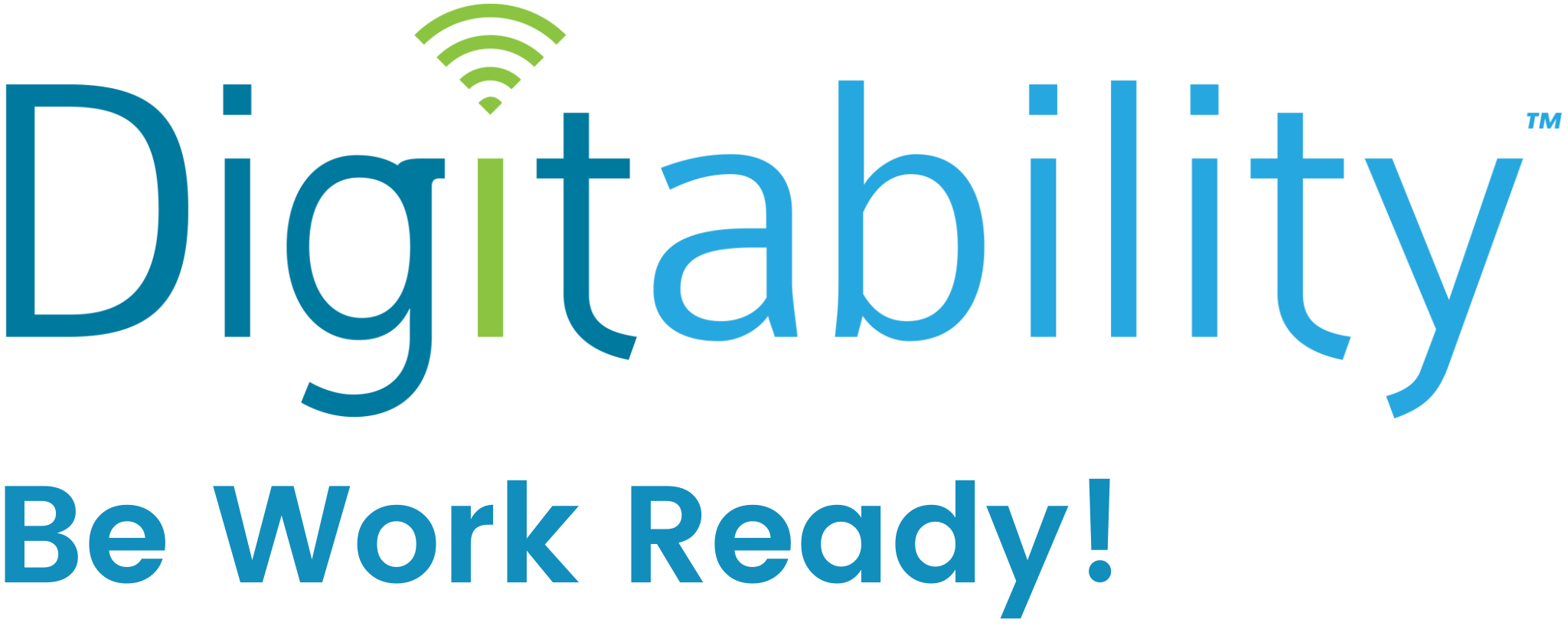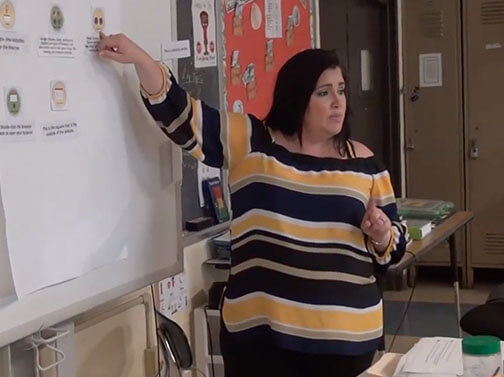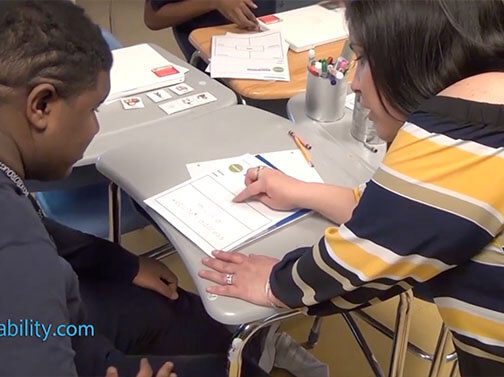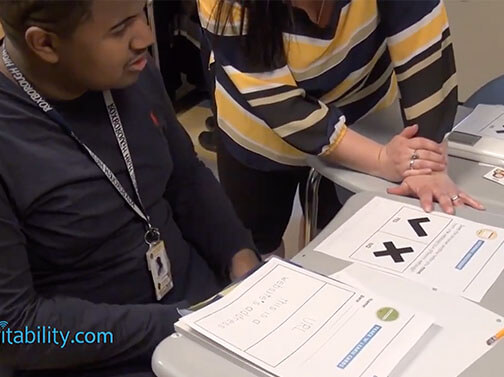Differentiation & Five Types of Prompting during the Warm Up
During the Warm Up (and throughout instruction), teachers use differentiation and prompting to increase expressive and receptive language based on individual student needs.
The first part of the Warm Up asks students to set financial goals for themselves. Students will recall how many dollars they earned on the previous day and answer how many dollars they want to earn today. The Supplemental Materials section of each lesson plan contains a number block. The numbers can be cut out and used as Image Exchange Cards for students to respond to these questions, or students can circle or point to their numeric answer for these questions. The visual supports are designed to help students with limited expressive and receptive language.
In next part of the Warm Up, teachers ask students to recall prior learning to prime them for building upon that prior knowledge in the upcoming lesson. Each lesson plan includes differentiated resources to support students during the Warm Up. These resources can be found in the Supplemental Materials section of each lesson plan. These supports include Image Exchange Cards, which can be used by students to provide answers to open-ended questions by pointing to, or exchanging the correct image, and Yes/No Cards, which can be used by students to answer yes or no questions during the Warm Up. These differentiated resources are designed to ensure that every student is able to be meaningfully included in the lesson, regardless of their ability level.
Teachers select the most appropriate leveled resource for each individual student based on student needs. The level of differentiated resources may vary from student to student. Not all students in a class may be using the same leveled resources. The differentiated resources should be used to decrease or increase assistance over time based on individual student goals. Selecting an appropriate leveled resource allows the teachers to minimize prompts provided to students and increase independence.
During a lesson, a teacher may use any combination of the Five Types of Prompts: Verbal, Gestural, Modeling, Positional and Physical. Prompting should be used to help a student answer a question correctly and/or demonstrate a target behavior.To encourage independence, teachers should use the least amount of prompting necessary for student success. When teaching a new skill, teachers may choose to use errorless learning, or start with more prompts and then fade out prompts once a student begins to show success in acquiring a skill.
Verbal Prompt: Verbal prompts include words, instructions, or questions that direct a student to engage in a target response. This could include a sentence starter, probing questions, or key word reminders. For example, "The internet is a computer network that..."
Gestural Prompt: Gestural prompts include pointing to, looking at, motioning, or nodding to indicate a correct response. An example of this would be a teacher asking "What is the internet?" and then pointing to the word wall that includes the definition of the internet.
Modeling Prompts: Modeling prompts include an adult or peer acting out a target behavior to encourage the learner to engage in that behavior. An example of this would be a teacher drawing a learner's attention to a peer who is exchanging an Image Exchange Card as a prompt for the learner to also exchange their own Image Exchange Card.
Positional Prompt: Positional prompts involve arranging the physical position of given materials so that the correct item is closest to or in front of the learner. An example of this would include a teacher giving a student multiple Image Exchange Cards to answer a question, but putting the correct answer card up close to the learner and the incorrect card(s) on the opposite side, away from the learner.
Physical Prompt: Physical prompts include actually touching the learner and guiding them through executing a behavior. A partial physical prompt would include just nudging or getting a student started on a task, such as by guiding their hand to the table to select an Image Exchange Card. A full physical prompt would include moving the student through the entire behavior, such as a teacher using hand over hand to have a student select an Image Exchange Card.
As a teacher, it is important to be mindful of the prompts that are provided to students. It is important to use enough prompts so that students learn the correct skills and behaviors, however, prompts must be balanced enough that students are not developing a prompt dependency.
See a Teacher Using This Practice
In the following video, a Digitability teacher...
Get Your FREE Quote Today!
Five Types of Prompting: Informal Assessment.
Teachers increase their use of prompting methods throughout the Informal Assessment. Learn More
Differentiation & Inclusion: Exit Ticket.
Teachers can increase their use of supplemental materials to include all students in activities. Learn More
Differentiation & Inclusion: Informal Assessment.
Teachers use differentiation throughout the Informal Assessment section to assess and include all students. Learn More
Ready to bring Digitability to your school?
Complete the form on this page to request a quote.



